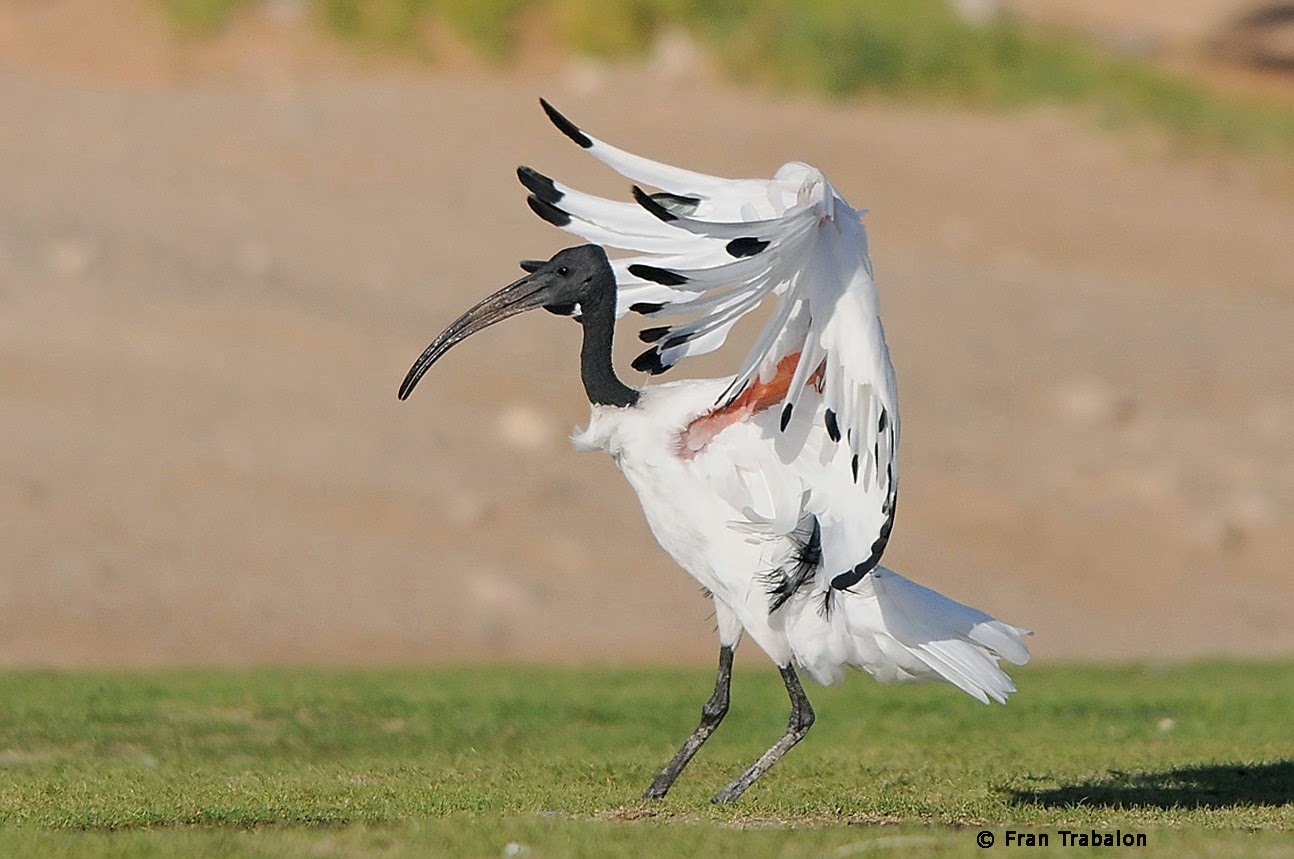Tanzania, 2014
Description
Habitat
The African sacred ibis is found in a wide range of habitats, including freshwater wetlands, salt pans, dams, mangroves, rivers in open forested areas, and cultivated fields. Human environments are also inhabited by this species and it is frequently found around refuse dumps, abattoirs and farmyards. In Zambia, it has been recorded up to elevations of 1,800 meters.
Voice
The vocalizations of the African sacred ibis are highly variable, with harsh croaking noises being made during flight and squeaking ‘whoot-whoot-whoot-whooeeoh’ or ‘pyuk-pyuk-peuk-peuk-pek-peuk’ calls made while individuals are on their breeding grounds. Vocalizations are also used by females to attract males and during copulation.
The vocalizations of the African sacred ibis are highly variable, with harsh croaking noises being made during flight and squeaking ‘whoot-whoot-whoot-whooeeoh’ or ‘pyuk-pyuk-peuk-peuk-pek-peuk’ calls made while individuals are on their breeding grounds. Vocalizations are also used by females to attract males and during copulation.
Diet
Reproduction
The breeding season of the African sacred ibis differs geographically, but usually begins during or shortly after the rainy season. Large, mixed-species colonies are formed, which include between 50 and 2,000 breeding pairs. The male collects the nest materials and the female assembles the structure. The nest is a large platform of sticks and branches, which is lined with leaves and grass and placed in a tree, bush or on the ground. When nest materials are in short supply, males may attempt to steal objects from other individuals within the colony. Once the nest is complete, the female African sacred ibis then lays an average clutch of two or three eggs, which have a rough surface and are dull white with a blue or green tinge and red-brown spots. The male and female take turns to incubate the eggs, usually changing over every 24 hours. The incubation period lasts around 28 days, after which the nestlings are fed and cared for by both adults, with one finding food while the other remains at the nest. The nestlings eventually fledge the nest when they are between 35 and 40 days old. A fledgling will leave its colony when it is between 44 and 48 days old. The pair bond between the male and female African sacred ibis lasts for one breeding season.
Photos by others
www.templeilluminatus.com
ibc.lynxeds.com
galleryhip.com
Credits











No comments:
Post a Comment